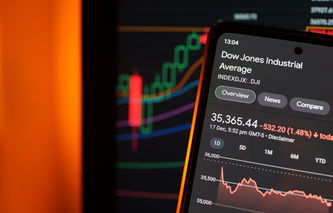In this article, we're going to discuss the final of the three famous Dow Jones Indexes: the Dow Jones Utilities Average. With its humble beginnings back in January of 1929, the Utilities Index is the youngest of the three averages.
Charles Dow was famous not only for creating the Indexes, but he was also the founder of Dow Jones and Company, which owns the Wall Street Journal and publishes the index data. Charles Dow passed away in December 1902, roughly 26 years before the first 18 companies that made up the Dow Jones Utilities Average were published by the Wall Street Journal.
History of the Utilities Index
While the Utilities Index may have started out with 18 member companies back in 1929, it took only six months for that number to rise to 20. It stayed at 20 until June of 1938, when the number of member companies was reduced to 15, which is the current number of companies in the Utility's average.
Unlike its big brother, the Dow Jones Industrial Average, the components of the Utility Average has been relatively unaltered. In fact, most of the changes that occurred in recent years are the result of mergers and acquisitions.
One bit of trivia surrounding the Index is the original average included American Telephone & Telegraph Co. It was later removed in 1938 and placed into the Dow Jones Industrial Average in March 1939. The company it replaced? International Business Machines
Utilities Components
As previously mentioned, the Dow Jones Utilities Index includes 15 stocks or component companies. Each of these companies is assigned a weight that is used along with the stock's price to calculate the Index. For example, Exelon Corp has a weight of around 4.81%. This means that approximately 4.81% of the movement in the index can be explained by the stock price of Exelon.
As mentioned in previous articles in this series, component weightings become important when a stock is replaced in an index; an event that does not happen very frequently, especially with the Utilities. By using a component weight method, a company in the index can be replaced without the need to restate historical price movements.
This feature adds to the overall stability, as well as the long-term usefulness, of the measure. The stocks included in today's Utilities Index, along with their weights appear in the following table:
Dow Jones Utilities 15 Components
Company Name | Weighting % |
American Electric Power Company, Inc. | 9.36% |
American Water Works Company, Inc. | 17.15% |
CenterPoint Energy, Inc. | 2.48% |
Consolidated Edison, Inc. | 8.10% |
Dominion Energy, Inc. | 8.53% |
Duke Energy Corporation | 10.31% |
Edison International | 7.15% |
Exelon Corporation | 4.81% |
FirstEnergy Corp. | 3.41% |
NextEra Energy, Inc. | 8.62% |
NiSource Inc. | 2.54% |
PG&E Corporation | 1.42% |
Public Service Enterprise Group Incorporated | 6.57% |
The AES Corporation | 2.68% |
The Southern Company | 6.87% |
The above weightings are as of December 2020. A spreadsheet of this information is also available for download: Dow Jones Utility Components.
Dow Utilities and Interest Rates
One of the reasons market analysts follow the Dow Jones Utilities so closely has to do with its perceived relationship to interest rates. According to the experts that study the Averages, a rise in utility stock prices means that investors are anticipating falling interest rates, while a decline in these stock prices means that interest rates are rising. There are two theories behind why this happens.
The first has to do with the amount of borrowing, or financial leverage, that utilities use to support their capital investments. When interest rates are declining, the interest expense on that borrowing goes down, and the profitability of utilities is enhanced. This makes these stocks more attractive to investors.
The second theory that links the rise and fall of the Utility Average to interest rates has to do with the typically high stock dividends that utilities pay. In fact, a study we conducted in 2011 found that 87% of the Utility Index stocks were paying dividends over 3.25%, compared to just 23% of the Industrials Index. When interest rates are falling, the dividend yields of the utilities become more attractive to those investors seeking a steady source of income, thereby driving up the price of utility stocks.




